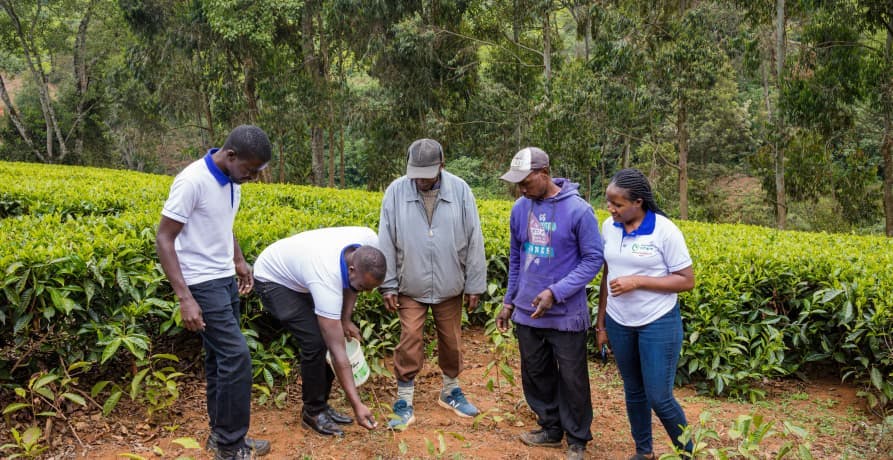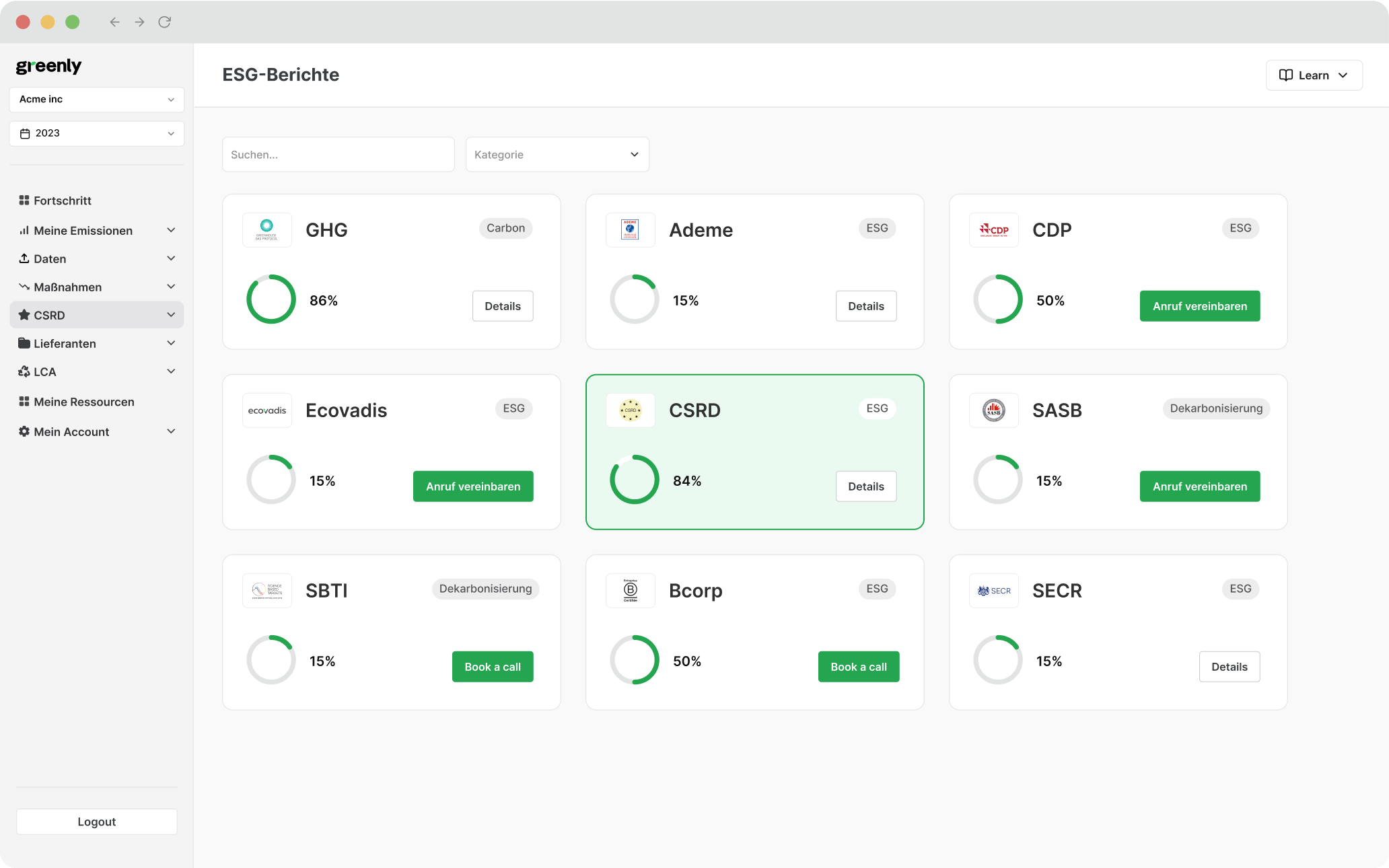ESG / CSR
Industries
What is regenerative tourism?



In recent years, travel has become cheaper and more accessible, enabling millions of people to explore far-flung corners of the globe. While this boom in tourism has brought economic benefits to many destinations, it has also led to significant challenges. Mass tourism often results in environmental degradation, overuse of resources, and disruption to local communities. Popular tourist spots face issues like pollution, habitat destruction, and cultural erosion, making it clear that a new approach to travel is urgently needed.
- What sets regenerative tourism apart from sustainable travel
- The core principles and real-world benefits
- How travellers and businesses can put it into practice
What is regenerative tourism? An overview
At its core, regenerative tourism is about creating a harmonious relationship between travelers and destinations. It encourages visitors to engage in activities that benefit the local ecosystem, culture, and economy. This can include initiatives such as environmental clean-ups, supporting local businesses, and participating in cultural preservation projects. By doing so, regenerative tourism not only mitigates the adverse effects of travel but also contributes to the overall health and resilience of destinations.
Key aspects of regenerative tourism:
| Key Principle | What It Means |
|---|---|
|
Ecosystem Integration
|
Recognizing that tourism operates within a larger ecosystem, where visitors and businesses act as stewards of the natural world. This principle emphasizes the need to understand and respect the interconnectedness of all living systems and their habitats. |
|
Community-Centric Approach
|
Empowering local communities by involving them in tourism decision-making and stewardship. This ensures that tourism benefits are shared equitably and that local cultures and traditions are respected and celebrated. |
|
Holistic Measurement of Success
|
Measuring success through well-being, cultural vibrancy, and environmental integrity — not just economic growth. Regenerative tourism supports broader, long-term indicators that reflect the full value of sustainable and inclusive practices. |
What's the difference between regenerative tourism and sustainable tourism?
Regenerative tourism differs from sustainable tourism in several significant ways. While sustainable tourism aims to maintain the status quo and minimize harm, regenerative tourism actively seeks to improve and rejuvenate.
Why is mass tourism damaging?
Tourism can bring economic opportunity, but when it's poorly managed, it comes at a cost. In many destinations, the sheer volume of visitors has outpaced local capacity, leading to widespread environmental degradation and growing frustration among residents. Here are some of the key ways that mass tourism harms people and the planet.
Environmental impacts:
Resource overuse
Water, energy, and land are consumed at unsustainable levels, especially in areas with fragile ecosystems.
Habitat destruction
Infrastructure like hotels and roads often displaces wildlife and damages natural landscapes such as forests, wetlands, and coral reefs.
Pollution and waste
More visitors mean more litter, plastic waste, sewage, and air pollution, particularly in nature reserves and along coastlines.
Carbon emissions from travel
Flights and cruise ships contribute significantly to greenhouse gas emissions, fuelling climate change.
Social and cultural impacts:
Real-world examples of backlash and reform
Across the globe, tourism hotspots are reaching a tipping point. Locals are speaking out, and some governments are stepping in. Here are a few of the most headling-grabbing examples:
What are the benefits of regenerative tourism?
Unlike traditional tourism models that often focus on minimizing damage, regenerative tourism is about creating lasting, positive change. But what does that actually look like?
From restoring natural ecosystems to boosting local economies and deepening cultural connections, the benefits of regenerative tourism go far beyond just being 'less damaging'.
Regenerative tourism actively contributes to the restoration and conservation of natural environments. Tourists and businesses engage in activities such as reforestation, habitat restoration, and wildlife conservation.
This helps to rebuild ecosystems, increase biodiversity, and mitigate the impacts of climate change. For example, eco-lodges that plant trees for every visitor or volunteer programs that focus on cleaning up beaches and protecting marine life are direct actions that aid environmental recovery.
By involving local communities in tourism planning and operations, regenerative tourism ensures that economic benefits are more equitably distributed. This approach supports local businesses, creates jobs, and encourages the development of community-led initiatives.
In turn, this can reduce economic dependence on unsustainable practices and build a more resilient local economy. Tourists are encouraged to buy local products, dine in local restaurants, and participate in community-based tourism activities, which helps to keep the financial benefits within the community.
Regenerative tourism places a strong emphasis on respecting and preserving local cultures and traditions. Tourists are provided with opportunities to engage with local cultures in meaningful ways, such as through cultural tours, workshops, and festivals.
This not only enriches the travel experience but also helps to sustain and celebrate the cultural heritage of the destination. By promoting cultural exchange and understanding, regenerative tourism fosters a deeper connection between visitors and the places they visit.
Travelers who participate in regenerative tourism often have more enriching and fulfilling experiences. Engaging in activities that benefit the environment and communities creates a sense of purpose and connection.
These travelers are more likely to form lasting memories and develop a stronger appreciation for the destinations they visit. This can lead to increased tourist satisfaction and loyalty, encouraging repeat visits and positive word-of-mouth recommendations.
Unlike traditional tourism, which often focuses on short-term gains, regenerative tourism is built on principles of long-term sustainability. By prioritizing the health and well-being of the environment and local communities, regenerative tourism creates destinations that can thrive for generations to come.
This forward-thinking approach helps to safeguard natural and cultural resources, ensuring that future generations can enjoy and benefit from them.
How can we implement regenerative tourism?
Moving from traditional tourism to a regenerative model isn’t something that happens overnight - it takes planning and commitment. Below are some practical steps that businesses and destinations can take to put regenerative tourism into action.
By taking these practical steps, tourism businesses and destinations can transition towards a regenerative model that not only minimizes harm but actively contributes to the restoration and rejuvenation of the environment and communities.

What are the challenges of regenerative tourism?
Turning good intentions into lasting change is rarely straightforward. Even with its promise, regenerative tourism comes with real-world hurdles, from systemic barriers to on-the-ground complexity. Here’s a closer look at what’s standing in the way, and how we might move forward.
| Challenge | Solution |
|---|---|
|
Limited Understanding and Awareness One of the biggest hurdles is the limited understanding and awareness of regenerative tourism principles among tourists, businesses, and even some policymakers. Many still equate sustainable tourism with regenerative tourism. |
Education and awareness campaigns are essential. Tourism businesses and organizations can develop educational materials, workshops, and training programs to inform stakeholders about the benefits and practices of regenerative tourism. Collaborating with educational institutions and media can also help spread awareness. |
|
Financial Constraints Implementing regenerative tourism practices often requires significant upfront investment in sustainable infrastructure, technology, and training. Smaller businesses and developing regions may struggle to secure the necessary funds. |
Governments and financial institutions can offer grants, subsidies, and low-interest loans to support the transition to regenerative tourism. Public-private partnerships can also mobilize resources and share the financial burden. Additionally, businesses can explore crowdfunding and community-supported initiatives. |
|
Resistance to Change Traditional tourism businesses and stakeholders may resist adopting regenerative practices due to entrenched habits, fear of the unknown, or concerns about profitability. |
Demonstrating the long-term benefits of regenerative tourism, including economic resilience, enhanced reputation, and improved visitor satisfaction, can help overcome resistance. Pilot projects and case studies showcasing successful implementations can serve as powerful examples. Engaging stakeholders in the planning process and addressing their concerns through transparent communication is also crucial. |
|
Measuring Impact and Success Unlike traditional tourism metrics that focus on economic indicators, regenerative tourism requires a broader set of metrics that include environmental, social, and cultural impacts. Measuring these impacts can be complex and resource-intensive. |
Developing standardized metrics and tools for measuring regenerative tourism impacts is essential. Collaborating with research institutions and using data analytics can help track and evaluate the effectiveness of regenerative practices. Regular monitoring and reporting ensure transparency and accountability. |
|
Ensuring Community Involvement Genuinely involving local communities in regenerative tourism can be challenging, especially in areas where there is a lack of trust or where community members have historically been excluded from tourism decision-making. |
Building trust through consistent and respectful engagement is key. Tourism businesses and organizations should prioritize community consultation and involvement from the outset. Empowering local leaders and providing capacity-building programs can help communities take an active role in tourism planning and management. Profit-sharing models and community-owned tourism enterprises can also ensure that benefits are equitably distributed. |
|
Balancing Economic Viability and Regeneration Ensuring that regenerative tourism is economically viable while achieving environmental and social goals can be a delicate balance. There is a risk that regenerative practices might be seen as financially unsustainable. |
Developing diversified income streams, such as eco-tourism, cultural tourism, and wellness tourism, can enhance economic viability. Marketing strategies that highlight the unique and enriching experiences offered by regenerative tourism can attract a niche market willing to pay a premium. Additionally, adopting a phased approach to implementing regenerative practices allows businesses to gradually adjust and manage costs. |
|
Addressing Over-Tourism Popular destinations may face challenges with over-tourism, which can strain local resources and degrade the environment, counteracting regenerative efforts. |
Implementing visitor management strategies such as caps on visitor numbers, timed entry systems, and promoting off-peak travel can help manage tourist flows. Developing alternative destinations and dispersing tourists across a broader area can reduce pressure on popular sites. Engaging tourists in responsible travel behaviors through education and awareness campaigns is also crucial. |
|
Policy and Regulatory Support Inconsistent or insufficient policy and regulatory support can hinder the adoption of regenerative tourism practices. Regulatory frameworks may not be aligned with regenerative principles. |
Advocacy and collaboration with policymakers are essential to develop supportive regulatory frameworks. Governments can enact policies that incentivize regenerative practices, such as tax breaks for sustainable businesses and regulations that enforce environmental standards. Establishing national and regional strategies for regenerative tourism can provide a coordinated approach. |
Real-life examples of regenerative tourism
Regenerative tourism is already being brought to life through innovative projects around the world, showcasing how tourism can contribute positively to the environment and local communities. Here are some inspiring examples:
Grootbos Private Nature Reserve, South Africa
Grootbos Private Nature Reserve is a shining example of how tourism can contribute to environmental conservation and community development. Located in the Western Cape of South Africa, Grootbos integrates biodiversity conservation with social development through various initiatives:
Conservation efforts
Grootbos focuses on restoring the native fynbos vegetation and protecting endangered species. Their conservation programs have led to the discovery of new plant species and the rehabilitation of degraded land.
Community engagement
The reserve runs the Grootbos Foundation, which provides education, sports programs, and job training for local communities. They also promote sustainable agriculture by training locals in organic farming and supporting local food production.
Finca Luna Nueva Lodge, Costa Rica
Finca Luna Nueva Lodge demonstrates the integration of regenerative agriculture and tourism. Located in the lush rainforest of Costa Rica, the lodge operates a certified organic and biodynamic farm:
Sustainable farming
The lodge uses regenerative farming techniques to enhance soil health, increase biodiversity, and produce organic food for guests. They also offer farm tours and workshops on regenerative agriculture.
Ecotourism
Finca Luna Nueva provides eco-friendly accommodations and nature-based activities, such as bird watching, hiking, and wildlife tours, promoting a deeper connection with nature and fostering environmental awareness among visitors.
Bardessono Hotel & Spa, United States
Bardessono Hotel & Spa in California’s Napa Valley is a luxury hotel that has embraced regenerative practices:
Mnemba Island, Zanzibar
Mnemba Island exemplifies the integration of luxury tourism with marine conservation efforts in Zanzibar:
Marine protection
The Mnemba Island Marine Conservation Area focuses on preserving the vibrant coral reefs and marine life around the island. Conservation initiatives include monitoring reef health, protecting turtle nesting sites, and promoting sustainable fishing practices.
Eco-lodging
Mnemba Island offers eco-friendly accommodations with a minimal footprint. The lodge uses solar power, rainwater harvesting, and eco-friendly waste management systems. Guests are encouraged to participate in conservation activities, such as guided snorkeling tours and beach clean-ups.
Tiaki Promise, New Zealand
New Zealand's Tiaki Promise is a nationwide initiative encouraging tourists to act as guardians of the country’s natural and cultural heritage:
Responsible travel
The Tiaki Promise urges visitors to care for the land, sea, and culture, ensuring their activities do not harm the environment. It promotes respect for local communities and sustainable practices among tourists.
Community collaboration
The initiative involves collaboration between the government, local communities, and tourism operators to foster a culture of respect and responsibility, ensuring that tourism benefits everyone involved.
How can tourists contribute towards regenerative tourism?
Participating in regenerative tourism means making mindful choices that positively impact the environment and local communities. Here are some tips to help you become a more responsible and regenerative traveler:
Choose eco-friendly accommodation
Travel responsibly
Engage with local communities
Support sustainable activities
Be a conscious consumer
Educate yourself and others

The future is regenerative tourism
As the impacts of climate change grow and natural environments come under increasing pressure, the tourism industry finds itself at a turning point. Protests against mass tourism in places like Spain and Italy reflect a rising frustration with travel models that put profits before people and the planet.
Regenerative tourism offers a powerful alternative, one that moves beyond doing less harm to actively giving back, helping to restore the places we visit and supporting the communities that call them home.
How can Greenly help your company?
Greenly supports companies in their efforts to reduce emissions and embrace greener practices. Our suite of services includes:
| What We Offer | How It Helps |
|---|---|
|
Carbon Management
|
Track Scope 1, 2, and 3 emissions using advanced technology for a complete view of your greenhouse gas footprint. |
|
Custom Action Plans
|
Develop tailored strategies with our climate experts, focusing on key areas for improvement and implementing effective changes. |
|
Supply Chain Decarbonization
|
Engage suppliers and transition to low-carbon options, achieving greater transparency and effectively managing Scope 3 emissions. Sustainable sourcing initiatives build greener partnerships and reduce emissions throughout your supply chain. |
|
Intuitive and Seamless Platform
|
Our user-friendly platform streamlines the process of calculating and monitoring your carbon footprint. It helps your business manage its environmental impact effortlessly, meet ESG goals, and enhance sustainability. |
Why Choose Greenly?
Greenly offers comprehensive support for your green journey, from carbon measurement and custom action plans to supply chain decarbonization and seamless platform integration. With Greenly’s help, your business can significantly reduce its environmental impact and achieve lasting sustainability.
Contact Greenly today to start leading the way in sustainability and build a greener future for your company.








